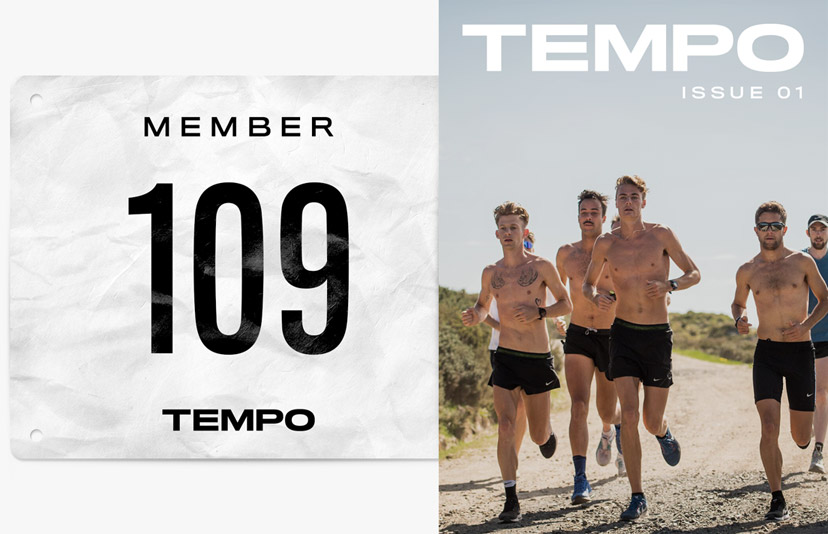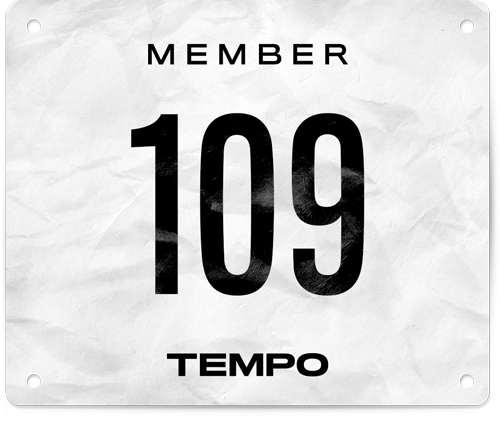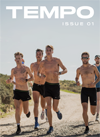Culture
Behind the Scenes in Boston
New Balance’s Alchemy Emerges from Tradition and Technology
Editor’s note: Following our collaboration with New Balance to send five amateur runners from Australia and New Zealand to experience the TCS New York City Marathon, Tempo was given a behind-the-scenes tour of the Boston-based company’s state-of-the-art sports research and design facilities, as well as the TRACK and their factory. Here’s how New Balance’s commitment to experimentation is reshaping running innovation.
A LITTLE OVER 10 years ago, a New Balance designer played with computational design software to address cushioning and support for runners. Chris Wawrousek's tinkering led to a geometric pattern that would revolutionise the business. In 2014, New Balance launched its proprietary Fresh Foam on the sole of the 980, leading to millions of shoes with a sweet cush'. Since then, the company has sold over 75 million pairs of performance running shoes and leveraged this material to other sports. Fresh Foam, raved about by brand loyalists for its comfort, and Fuel Cell – its fast, lightweight sibling – make up New Balance’s platform products today.
Understanding how the brand encourages internal design and technological exploration is a helpful way to appreciate how it has risen above the rest of the global sneaker crop without compromising its down-to-earth values of quality, performance and innovation.
LAWRENCE, MA.
Thirty miles (just under 50km) outside of Boston, an overcast sky added a melancholic backdrop to the former textile mills peppering the Merrimack River. New Balance’s factory stood out with its clock tower, a steeple I could see from the highway. At five floors high and with a footprint of 525,000 square feet (48,775 square metres), it commanded an even larger presence up close. The 114-year-old brick building is one of the last architectural beasts from the Industrial Revolution still thriving in a city with a heyday past.
New Balance has found a grip in the streetwear and fashion worlds through increased advertising, marketing and partnership budgets over the past seven years – aided by creative director Teddy Santis, designer Justin R. Saunders and artists such as Action Bronson and Jack Harlow. Since 2019, the brand has increased its marketing investment by 37%. And it’s been rewarded for these bold choices. New Balance, a brand that reaches “dads in Ohio and supermodels in London” has more than doubled in the past decade: from US$2.39 billion in 2012 to more than US$5 billion in 2022.
For all its growth, the pragmatic running company celebrates its heritage in Lawrence. The factory’s planked wooden floors, freight elevator and a timeline on the wall dating back to 1906 (the shoe store’s origin) created a sense of living history. This is fitting because New Balance owner Jim Davis purchased the company over fifty years ago with a vision: to keep manufacturing in the USA. In 1972, six associates made about 30 pairs of shoes a day. Today, 420 skilled workers would make about 5,000 shoes across two shifts here. New Balance does have overseas production now, but its intentions remain consistent with its Made in USA line, a showcase of craftsmanship produced from five New England factories.
Our first stop is on the second floor, New Balance’s Innovation Lab. The lab’s ethos is to “make tools to create better products”, according to JF Fullum, the senior design director of the newly created “Moonshot Innovation” group. Fullum explains how the original Fresh Foams came from experimenting – his team has since refined the midsole and fine tuned areas of flexibility and stiffness. “Innovation is not always just having an answer. It's being able to iterate,” he says. Their job begins at discovery.
The Innovation Lab adheres to a “digital first” mentality. Whether it’s an aesthetic decision or a performance decision, working in the digital space accelerates the time it takes to make something. A physical sample takes 35 days to build overseas and then deliver, whereas a virtual sample takes five days. Digital assets can be used from product creation to brand marketing, using modelling tools such as Modo (which was used in producing the Star Wars films) and Gravity Sketch, along with Clo for apparel.
“We visualise everything we do before making it,” says vice president of innovation and digital design Jared Goldman. In the spirit of elite athletes with serious aspirations, you have to see where you want to go.
Recently, the star hurdler and sprinter Sydney McLaughin-Levrone came to the lab and saw images of herself wearing New Balance products. Baffled, she said, “I don't remember that shoot.” The team told her it’s because she never did it: “It’s artificially created.” They used 3D-modelling to render Sydney’s start in various types of shoes, showing her how the different designs affect her performance. Virtually generated images save the athlete time away from training and help the design team translate science (the easiest way to communicate is often visually). Depending on your own perspective, you might see this as cutting edge or, perhaps, dystopian – but the ability to use an athlete’s name, image and likeness is part of the deal when they sign a contract. Here it becomes part of the design process and can feed back into the chase for performance boosts.
Tools in the lab include VR, 3D printing, AI platforms like Midjourney and Viscom, and visual effects (VFX) software – all to elevate New Balance’s existing sneaker technology. Designers can connect with colleagues in London, Shanghai and Boston on a VR headset to view a prototype all at the same time.
“VR helps bring people making decisions closer to the product before you're actually making things,” Goldman says. “In 3D, you can see how the outsole is going to be shaped by the geometry. Before, it was a napkin sketch. That makes a difference.”
Sensibly, the innovation team constantly strives to improve and refresh what’s next, such as their carbon fibre plates and responsive, high-energy-return foams. They’ll often work with elite athletes to validate their computational designs. “We’re sweating millimetres to understand the performance of the product,” Fullum says. Athletes, so often in tune with their bodies to a superhuman degree, will point to a spike the lab moved by two millimetres. “It's pretty crazy stuff that most people wouldn't notice. But 1% can mean a lot; it’s the difference between making the podium or a gold medal.”
The Innovation Lab team recently witnessed the fruits of their labour on the oval. Elite athletes such as McLaughlin-Levrone and Femke Bol earned big wins and world records in their New Balance spikes. “I have videos on my phone of Femke doing strides and jumping hurdles in the lab. Two weeks later she's breaking world records,” Fullum says.
The employees at Lawrence are self-aware about using a marketing tagline but many of them repeat the phrase “fiercely independent” to me – perhaps because it’s true. New Balance is a privately owned company, standing apart from the herd of publicly traded sneaker brands. “I've worked at other brands before, bigger brands; there's less roadblocks and barriers here,” says Fullum. With no shareholders to answer to, he believes they get things done quicker. When an athlete comes into the lab, they can try a shoe on and, if it hurts or there’s an issue, they can tweak it on the spot and have them run in it again. The Innovation Lab has been intentionally located in Lawrence so that designers can collaborate with the factory to make snappy fixes.
The day I walked the factory floor, rows of skilled workers were making the classic grey-colored 990 silhouettes, completing a pair every 44 seconds. A visibly diverse bunch of men and women of different nationalities create over a million shoes a year in this factory alone. They use time-honoured technology and techniques like industrial sewing machines and conditioners that use heat and humidity to give the shoes their shape, interspersed with robotic-looking equipment spurting out automated colours. I noticed most of the workers rocked their employer’s gear from head to toe, wearing 990s for their intended use. William Riley’s mission, when he started New Balance in 1909, was “to make prescription footwear that would alleviate the foot pain of working people on their feet all day”. New Balance may have evolved to customise its shoes for superstar athletes but it remains a brand that appeals to everyone.
BRIGHTON, MA.
On the outskirts of Boston, New Balance’s headquarters are the jewel in the company's crown. As a nod to the past, the 250,000 square feet (23,225 square metres) building has similar dimensions to the Lawrence factory. But the 19-month-old edifice integrates modern glass and steel architectural elements to resemble, from the I-90 highway, a foot in motion. Into what was previously a wasteland parking lot, New Balance injected its triple-decker landscape with a mini city that includes a hotel, a concert venue, a skating rink, retail stores, restaurants and, of course, the TRACK, a 200-metre Mondo-surfaced, wooden-banked indoor track surrounded by 2,300 seats.
The facility contains elevated touchpoints to ensure an athlete has everything they need to run their best, something Jim Davis ensured. Features include a 130m warm-up track ideal for icy winters and a rubberised stairwell that can accommodate athletes’ shoes.
Naturally, the bright red track glimmering with the promise of a personal record leads me to ask, “Can I take a lap?” No, they say – lane one is curing. Disappointed I can’t pound my Blundstones on their prized surface, I have to respect their dedication to legacy building. “Like a hockey rink, we put a fresh coat on the track at the start of the season,” Jay Rourke, the general manager of the TRACK tells me. Their inaugural year saw a lot of wear and tear on the track, hosting the ACC Championships, the NB Grand Prix, high school indoor nationals, plus local community meets. The TRACK's been open for a little over a year but numerous records have already been broken, from Femke Bol’s 500m indoor world record in 1:05.63 to the women’s indoor DMR world record from New Balance Boston in 10:33.85. With a fresh coat of paint drying, they’re literally laying the groundwork excellence to occur again.
On the Sports Research Lab floor, questions buzz freely, like “How do we make this pair of shoes, or shirt, better?” Or, “How do we help our athletes run their best?” It’s a true scientist's playground. Armed with state-of-the-art equipment, researchers focus on three pillars: foundational research, innovation partnerships and athlete insight. Barry Spiering, a lead physiologist in the lab, conducts performance evaluations with athletes to determine their strengths and improvements at a physiological and biomechanical level. “My work combines athlete performance science and product research and development,” he says. He pays attention to how products change an athletes’ performance, or incite an injury risk. Down the hall, an environmental chamber is used to replicate altitude training or extreme humidity. Team New Balance Boston, described as part of the family multiple times, can prepare for a training camp in Flagstaff in the chamber’s treadmill or researchers can set up their tube-faced robotic mannequin (named Andy after the hero of Toy Story) on the ’mill and measure his sweat permeability and how well their latest shirt evaporates.
Despite its new technology, New Balance hasn’t lost the value of a good human conversation. The athlete insight portion takes place in a locker-room styled area where athletes sit beside researchers. “[Our qualitative research] helps to get their perceptions about how they feel, what they're looking for and what they're missing in any particular product or the market,” says Jinger Gottschall, the director of sports research. Bringing in elite and everyday athletes, the team helps set the template for New Balance’s future successes. Recently, they studied women’s marathon shoes, comparing their shoes and competitors' shoes, to understand their runners’ preferences and what direction to go next.
What strikes me is New Balance’s willingness to open their doors and take in feedback, not letting their egos get in the way of making an even better product. The brand’s not afraid to be humbled before pushing the next boundary in sneaker science. The only surprising thing is their controlled ambition: “to be the undisputed third-largest athletic brand in the world”. But they remain focused on what’s most important – the person who wears it.


